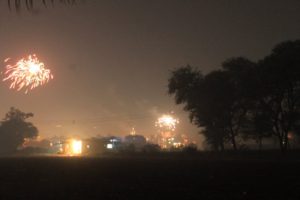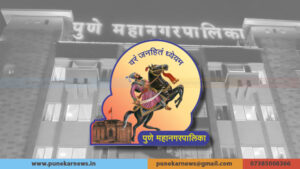Smart cities closer than you think according to Philips Lighting
March 17, 2017 New Delhi: Philips Lighting (Euronext Amsterdam ticker: LIGHT), a global leader in lighting, has created a sneak preview of what urban life could be like in 2030, in a future-gazing virtual reality experience. At the 4thSm@rtUrbanation Convention in New Delhi today, Philips Lighting unveiled a picture of how connected lighting technology will play a key part in underpinning the smart cities we can expect to inhabit in just over a decade.
“Technology is a big enabler in making cities more livable and delivering new services to its inhabitants. Through our connected lighting systems and services, Philips Lighting is already putting in place today many of the building blocks enabling the smart cities of tomorrow.” said Mr. Harshavardhan Chitale, Vice Chairman and Managing Director, Philips Lighting India.
Urban populations are growing rapidly and 60 percent of the world population are predicted to be living in cities by 2030[1]. Philips Lighting is helping to pave the way for massive urban growth by developing a people-centric blueprint for lighting and Internet of Things (IoT) services in the smart city of the future. In the first installment of the ’2030: Smart city life’ virtual reality experience, the company shows how connected LED lighting has the potential to enhance quality of life, transform everyday experiences and services, and ensure sustainability in our ever expanding global cities. By 2030 it is expected that there will be close to 70 billion light points.[2]
Public lighting is installed everywhere: where people live, work, play and travel. Its primary function is to provide energy efficient, quality light to enhance public safety and enhance the urban landscape. However, in the future a city’s lighting infrastructure will also offer enormous potential to be part of a city-wide network capable of acquiring data and delivering information and services to and from millions of devices, from garbage bins to autonomous vehicles. In this way it could help enable smart city services to improve the lives of its citizens and city managers alike.
Philips Lighting’s look into the city of 2030 explores four scenarios which demonstrate how future lighting technology can deliver more sustainable, better-connected and more enjoyable cities. These are:
- Connected Streets
Connected LED street lights provide highly energy efficient, quality light, but they are also sensor nodes on an information highway. In 2030 connected street lights could stream data between millions of devices. Connected lighting infrastructure collects and distributes data and improves city services such as light, traffic, air quality, public safety, parking and other location based services, leveraging state-of-the-art communication technologies. Autonomous vehicles navigate roads safely, using and communicating with sensors in street lights that scan the road and pavements, and provide a frame of reference by transmitting situational information to augment the vehicles’ on-board sensors.
Philips Lighting recently announced one of the world’s largest connected street lighting systems in Jakarta with Philips CityTouch monitoring and managing nearly 90,000 street lights.
- Interactive Public Spaces
Scarcity of space will compel cities to extend public spaces underground, with a seamless transition made possible by lighting that mimics natural daylight and makes people feel comfortable. The digital lighting system can send positional data to help drones navigate and deliver items, while responsive light walls display art and foster citizen interaction and creativity.
Philips Lighting has delivered a new Philips Power over Ethernet (PoE) connected lighting system that transformed Madrid’s landmark office skyscraper Torre Europa into a smart office.
- Sustainable City Farming
Beneath the city and in unused spaces, urban farms that use little water and no pesticides, can grow plants and vegetables sustainably – reducing the distance between the farm and your fork, increasing food security, ensuring provenance and protecting precious natural resources.
Since 2013, Philips Lighting collaborates with GrowUp Urban Farms that is a vertical urban farm established in an unused warehouse in East London’s industrial area. This is the first commercial aquaponic urban farm in the UK and produces 20,000 kilograms of fresh salads per annum with the help of Philips GreenPower LED lighting.
- More Personalized Living
In the home of 2030, lighting will be able to synchronize with everything from your door bell to your television and music and will be fully adjustable to individual preferences. It will pre-empt your needs and complement your well being, energize you, relax you and keep you safe.






